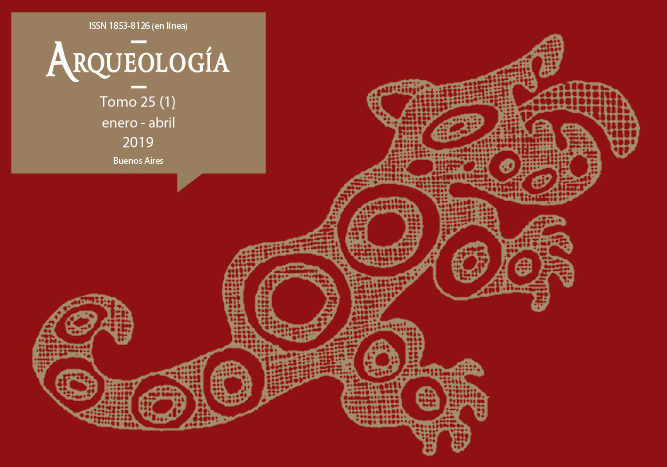Cultivated and wild plant micro-remains from ceramic fragments. First evidences from West-central Argentina
Keywords:
West-central Argentina, Archaeobotany, Plant micro-remains, Pottery, Maize, Algarrobo
Abstract
West-central Argentina was the southern limit of the spread of agriculture in South America until European arrival, and the consumption of agricultural products varied its intensity during the last 2,000 years. A first for this region, this paper analyzes plant micro-remains adhered to the surfaces of ceramic fragments from northern Mendoza archaeological sites: Rincón de Los Helados (pre-cordillera) and Memorial de la Bandera (piedmont). Our aim is to present a preliminary study on the use of plants between ca. 2,000 and 1,000 years BP, and thereby contribute to data concerning the function of ceramic vessels. The results indicate the presence of maize and algarrobo starch, supporting previous analyses of plant macro-remains and isotopes in human bones.Downloads
Download data is not yet available.
Published
2019-02-01
How to Cite
Prieto-Olavarría, C., Chiavazza, H., & Musaubach, M. G. (2019). Cultivated and wild plant micro-remains from ceramic fragments. First evidences from West-central Argentina. Arqueología, 25(1), 221-231. https://doi.org/10.34096/arqueologia.t25.n1.6015
Section
Reports
Copyright (c) 2019 Cristina Prieto-Olavarría, Horacio Chiavazza, M. Gabriela Musaubach

This work is licensed under a Creative Commons Attribution-NonCommercial-ShareAlike 4.0 International License.
Authors who publish in this journal agree to the following conditions:
- Authors retain copyright and yield to the journal right of first publication with the work registered with attribution license Creative Commons, which allows third parties to use the published always mentioning the authorship of the work and first publication in this magazine.
- Authors can make other independent and additional contractual arrangements for the non-exclusive distribution of the version of the article published in this issue (p. Eg., Inclusion in an institutional repository or publish it in a book), provided that clearly indicate that the work was published for the first time in this magazine.
- It allows and encourages the author / s to publish their work online (eg institutional or personal pages) before and during the process of revision and publication, as it can lead to productive exchanges and greater and more rapid dissemination of work published (See The Effect of Open Access).





(1)13.png)






1.jpg)
1.jpg)


13.png)
1.png)


(1)1.png)









